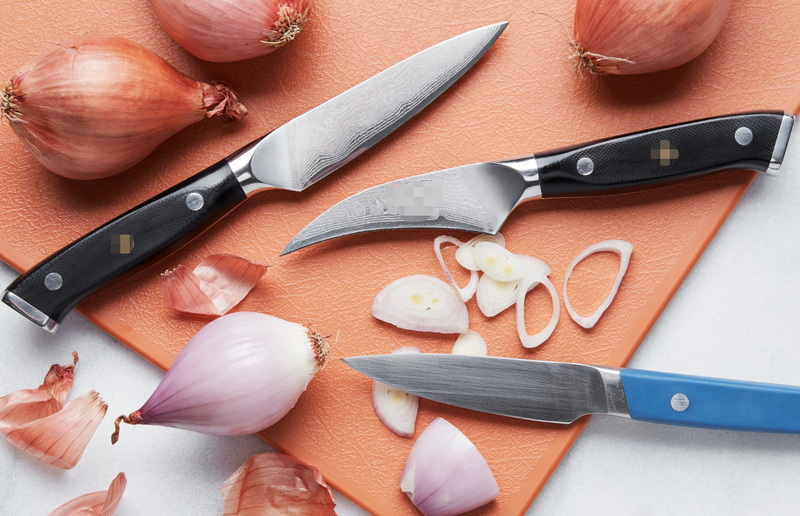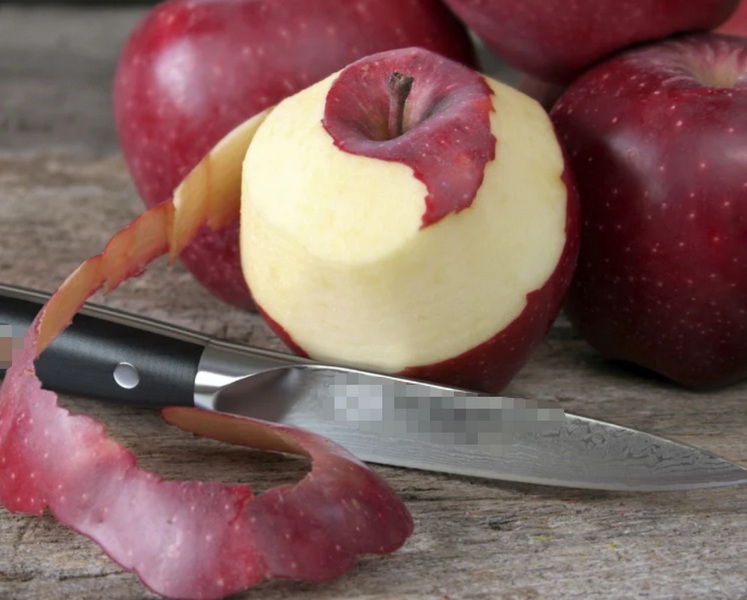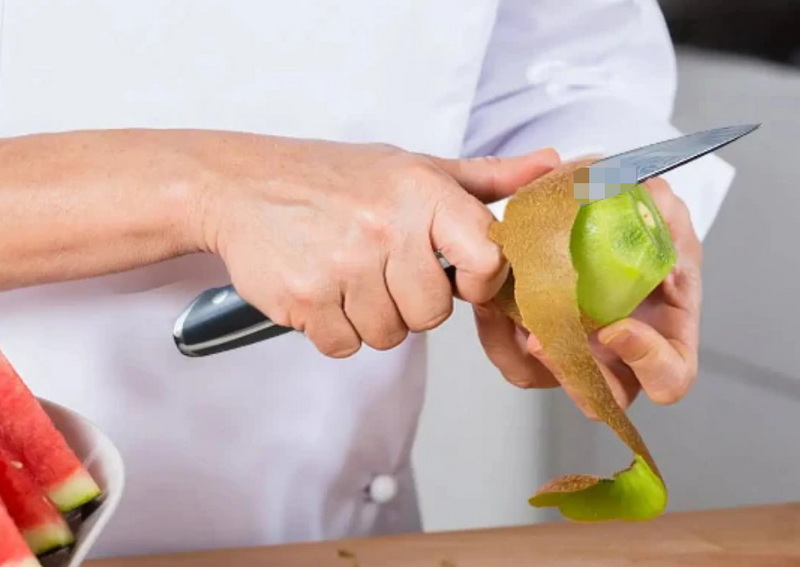- All
- Product Name
- Product Keyword
- Product Model
- Product Summary
- Product Description
- Multi Field Search
Views: 222 Author: Ann Publish Time: 2025-10-22 Origin: Site











Content Menu
● Introduction to Paring Knife Basics
>> Key features to look for in Paring Knife designs:
● Handling and Grip Techniques
>> Practice routine suggestions:
● Core Techniques Every Pro Chef Uses
>> 1) Peeling
>> 4) Mincing and Fine Dicing (Small Batches)
>> 5) Garnishing and Intricate Detailing
● Safety Tips and Best Practices
● Material and Build Considerations for OEM Paring Knives
>> For brands evaluating OEM paring knives, material selection is crucial. Consider:
>> Advanced OEM considerations:
● Care, Maintenance, and Sharpening
● Role of Paring Knife in Different Cuisines
● Real-World Workflow Enhancements
● Testing and Quality Assurance
● Innovations and Market Trends
● Care, Maintenance, and Sharpening (Extended)
● FAQ
>> 1) What is a Paring Knife used for?
>> 2) How long should a Paring Knife be?
>> 3) How do you maintain a Paring Knife?
>> 4) Can a Paring Knife be used for fruit peeling?
>> 5) What should brands consider in OEM Paring Knife production?
Paring knives are small but mighty tools in every kitchen. They excel at intricate tasks such as peeling, trimming, scoring, and delicate garnishing. In this guide, we'll explore practical techniques, maintenance tips, and efficiency strategies so you can wield a paring knife like a pro chef. This article is tailored for international buyers and brands seeking OEM insights on high-quality paring knives.

A paring knife is typically a short-bladed knife, usually 3.5 to 4.5 inches long, designed for precision work. The blade's small size enables fine control for tasks that larger knives cannot perform as accurately. When choosing a paring knife for OEM production, consider blade steel quality, edge retention, corrosion resistance, and handle ergonomics. The keyword Paring Knife should appear naturally throughout the article to reinforce SEO without sacrificing readability.
- Blade length: 3.5–4.5 inches for specialty tasks
- Blade geometry: sharp point, fine edge for detailed work
- Handle ergonomics: non-slip grip, balanced weight
- Materials: stainless steel, high-carbon stainless steel, or laminated options
- Maintenance: easy sharpening and corrosion resistance
Understanding blade geometry helps you select the right profile for different tasks. A classic paring knife typically features a slightly curved edge and a fine tip. This combination allows you to pierce, trim, and lift with minimal resistance. For OEM projects, consider a seamless transition from blade to handle to reduce stress concentrations and improve durability in commercial dishwashing environments.
Choosing the right steel is critical. Stainless options resist corrosion and are easier to maintain in busy kitchens, while high-carbon steels hold edges longer but require more diligent drying and rust prevention. For brands targeting high-end markets, laminated or layered steels can offer a balance of hardness and stain resistance, along with an appealing aesthetic.
Grip and balance influence control. A well-balanced paring knife reduces hand fatigue during repetitive tasks. When evaluating handles, test for a comfortable grip, a secure non-slip surface, and compatibility with gloves used in professional kitchens. For OEM partners, offering a range of handle materials—Pakkawood, G10, durable polymers, and composite laminates—can accommodate regional preferences and branding requirements.
A secure grip improves precision. Hold the paring knife with a relaxed yet firm grip, letting your thumb rest on the blade's spine near the handle for better control. A few common grips include:
- Pinch grip: pinch the blade with your thumb and forefinger while the rest of your fingers wrap around the handle. This provides the most control for delicate work.
- Claw grip: curl your fingertips under your knuckles to protect them while you guide the knife.
- Tip control: use small, controlled motions to tip the blade for precision tasks like peeling or de-veining.
Ergonomic checks during practice help your team avoid fatigue. When demonstrating to OEM customers, emphasize that the blade should feel like an extension of the hand, with a balanced distribution of weight toward the spine to prevent wrist strain during long prep sessions. In busy kitchens, paring knives may be used by chefs wearing latex or nitrile gloves; test glove compatibility to ensure a safe, confident grip.
- Start with light tasks like peeling a citrus or trimming defects on a carrot.
- Progress to delicate fruit garnishes, where precision matters most.
- End with intricate decorative cuts to reinforce control and consistency.
Below are fundamental techniques you can practice with a paring knife. Work through them one at a time and only progress when you can perform each with consistent accuracy.
Peeling is one of the most common uses of a paring knife. Use the blade's curved edge to lift the peel away from the fruit or vegetable. Move in a steady, clockwise or counterclockwise motion depending on your dominant hand and the fruit's orientation. Keep your guiding hand steady and away from the blade's path. For OEM demonstrations, show how blade angle and pressure affect peel thickness and skin integrity.
For peppers, apples, or cucumbers, a paring knife excels at removing cores and seeds. Create a shallow cone by rotating the knife tip while cutting. Remove seeds with minimal waste, preserving the fruit's structure. Consistency in removal helps reduce waste and improve yield in commercial prep.
Deveining shrimp, trimming blemishes on fruit, and removing the core from strawberries are all tasks where a paring knife shines. Use the tip for precision and steady hand control to minimize damage to the surrounding flesh. In bulk prep, maintain uniform cuts to speed up plating and presentation.
While larger blades handle bulk tasks, a paring knife can mince herbs or dice small items in controlled batches. Keep your knuckles curled and move the blade in a rocking motion to achieve uniform pieces. For more efficiency, combine with a mezzaluna or a small santoku for a staged workflow, but always return to the paring knife for final touches.
Create decorative cuts on citrus zest, vegetable garnishes, or carrot curls with careful, deliberate strokes. Your paring knife can transform simple vegetables into restaurant-quality garnishes. In branding demonstrations, showcase unique edge finishes or handle colors that lend themselves to visually stunning presentations on social media and menus.

- Always keep the blade sharp; a dull blade increases the risk of slips.
- Use a stable cutting board and secure produce before cutting.
- Keep fingers away from the blade's edge; use a claw grip for protection.
- Clean and dry the blade after use to prevent corrosion.
- Store knives in a knife block or magnetic strip to avoid nicks and accidents.
- Use proper sharpening tools compatible with the blade steel to maintain performance over time.
- Train staff with routine safety drills and clear labeling for different knife types.
- Steel type: 5Cr15MoV or higher for stainless options; VG-10 or 420J2 variants for premium lines
- Edge geometry: high-polish edge for clean cuts
- Heat treatment: proper hardening for edge retention
- Handle material: pakkawood, G10, or high-quality polymer for grip and durability
- Corrosion resistance and stainless content to withstand kitchen environments
- Finish options: mirror polish, satin, or laser-etched branding on blade
- Tang construction: full tang for strength and balance
- Spacer and rivet design to reduce handle wobble
- Packaging design that protects the blade during shipping and communicates OEM value
- Compliance with food-contact regulations across target markets
- Regular honing maintains the edge; use a honing rod at regular intervals.
- Periodic sharpening with a professional sharpener or whetstone keeps the edge razor-sharp.
- Hand wash to preserve finish; avoid dishwasher exposure which can degrade handles and blades.
- Dry thoroughly to prevent rust on carbon steel variants.
- Inspect for micro-chips or roll, especially if used on bone or frozen items; switch to a sturdier blade for those tasks.
Paring knives appear across many culinary traditions, though usage patterns vary. In Asian cuisines, smaller blades enable delicate fish skin trimming, while Western kitchens may use paring knives for fruit peeling and garnish work. For OEM customers, offering variations in blade steel and handle design can cater to regional preferences and food safety standards. Cultural plating expectations can also influence handle color and finish choices for market differentiation.
- Using a paring knife for tasks that require a larger blade can cause loss of control.
- Not maintaining a sharp edge leads to slips and poor cuts.
- Ignoring safety practices, such as not using a claw grip on delicate work, increases risk of injury.
- Over-reliance on a single technique; vary your approach for different produce textures to maintain quality.
To maximize efficiency in OEM production and kitchen use:
- Standardize blade heights and bevel angles across product lines to simplify training.
- Offer modular handle systems that allow customers to swap surfaces without changing blades.
- Create demonstration videos showing “before and after” results with the Paring Knife in peeling, coring, and garnishing tasks.
- Provide maintenance kits with sharpening stones, honing rods, and cleaning cloths tailored to each steel type.
Before shipping OEM Paring Knife sets:
- Perform edge retention tests on representative batches of blade steel.
- Verify handle integrity under simulated kitchen wash cycles and glove use.
- Test ergonomics with users of different hand sizes and dominant hands.
- Validate branding durability under heat and abrasion conditions.
Emerging trends include eased integration with knife blocks that feature built-in sharpeners and smart labeling to assist novice cooks. Some brands explore micro-serrated edges for improved grip on certain soft fruits, though this requires precise manufacturing controls. Data-driven design, where consumer feedback informs future iterations, continues to guide OEM strategies for paring knives.
A robust maintenance routine extends the life of Paring Knife:
- Implement a monthly de-burring session to prevent micro-burrs from forming along the edge.
- Use a polishing stone or strop to maintain a refined edge bevel and reduce micro-scratches.
- Store in a protective sheath or sleeve when not in use to prevent accidental contact with other blades.
- Periodically inspect the blade's tip for tip-chipping, especially if the knife is used for delicate tasks near the board edge.
A paring knife is a versatile tool that, when used with proper technique, elevates precision and efficiency in the kitchen. By selecting the right Paring Knife design for your OEM product line, mastering grip and form, and maintaining the blade, chefs can achieve professional results in delicate tasks and intricate garnishing. If you're exploring OEM Paring Knife options or need guidance on blade steel, handle materials, or ergonomic designs for your brand, our team can tailor solutions to your specifications.

A Paring Knife is used for peeling, trimming, coring, and delicate, small-scale prep tasks.
Typical lengths range from 3.5 to 4.5 inches depending on the task and user preference.
Regular honing, periodic sharpening, hand washing, and dry storage help maintain performance.
Yes, especially for small fruits and precise peeling tasks.
Blade steel, edge retention, handle ergonomics, and corrosion resistance are key considerations.
The Ultimate Professional Knives for Halal Butchery in Middle Eastern Kitchens
Chef Knife Size Guide: Choosing Between 6″, 8″, 10″, And 12″
Custom Knife Handles: How To Design A Chef Knife That Fits Your Hand Perfectly
Chef Knife Surface Treatments Guide: From Polished Migaki To Damascus Patterns
Inside Our Professional Knife Sample Room: Quality You Can See
Universal Knife Block Buying Guide: Modern Acrylic & ABS Knife Holders for Professional Kitchens
Universal Knife Block: The Complete Guide To Modern, Hygienic Knife Storage
The Complete Guide To Red Handle Knife Sets: Style Meets Functionality in The Kitchen
Professional Knives for Halal Butchery And Middle Eastern Cuisine